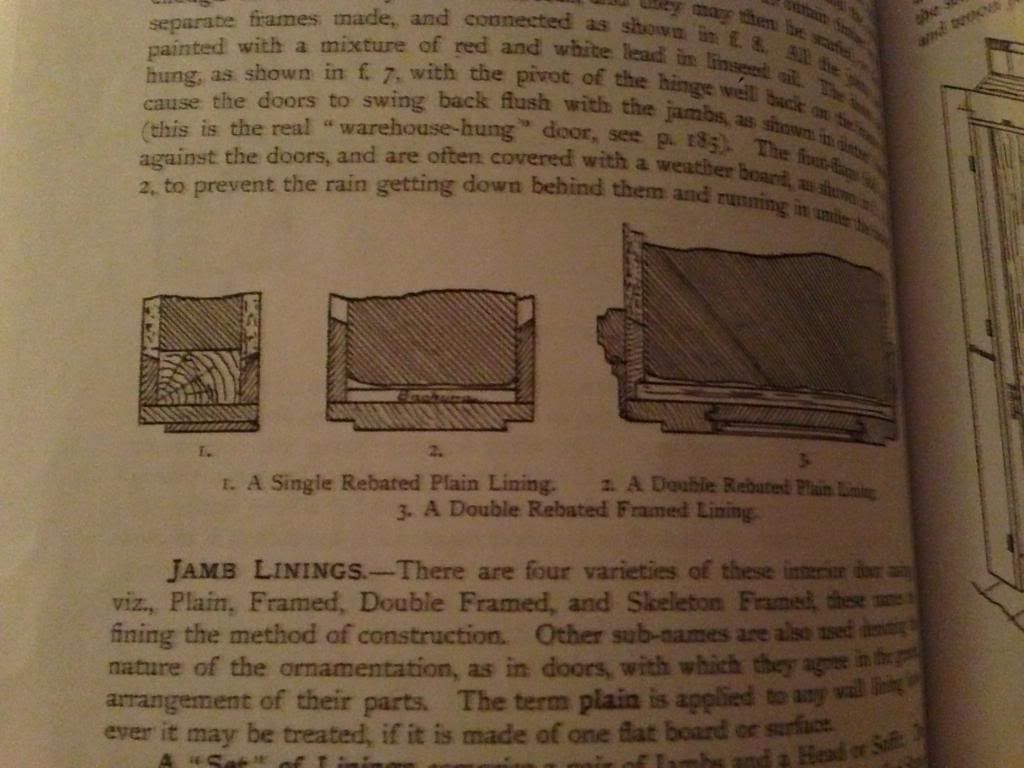rhrwilliams
Established Member
Hi all .
I'm currently converting a church into a house . I've stud walled an area to make 3 bedrooms . The walls are 90mm stud (it's 2" x 4" but 90mm is finished size) and it has 15mm woodwool boards each side and will have roughly 3mm lime skim - on top of this is paneling to low level both sides.
I'm making all the doors so will also make linings etc but I'm struggling with the lining dimensions , design and build up.
Anyone know a good text book or reference for traditional details etc for things like this ? I have Ellis modern practical joinery which is my usual bible but nothing very helpful .
I want to copy existing doors which seem to be made up of about 3 seperate liners. I also visited 18 stafford terrace (google it - great) which has the same type build up of frame , beading frame and stop beads etc
P-S , I know how to fit a modern off the shelf door liner but that's not really what I'm after
Thanks
I'm currently converting a church into a house . I've stud walled an area to make 3 bedrooms . The walls are 90mm stud (it's 2" x 4" but 90mm is finished size) and it has 15mm woodwool boards each side and will have roughly 3mm lime skim - on top of this is paneling to low level both sides.
I'm making all the doors so will also make linings etc but I'm struggling with the lining dimensions , design and build up.
Anyone know a good text book or reference for traditional details etc for things like this ? I have Ellis modern practical joinery which is my usual bible but nothing very helpful .
I want to copy existing doors which seem to be made up of about 3 seperate liners. I also visited 18 stafford terrace (google it - great) which has the same type build up of frame , beading frame and stop beads etc
P-S , I know how to fit a modern off the shelf door liner but that's not really what I'm after
Thanks


































